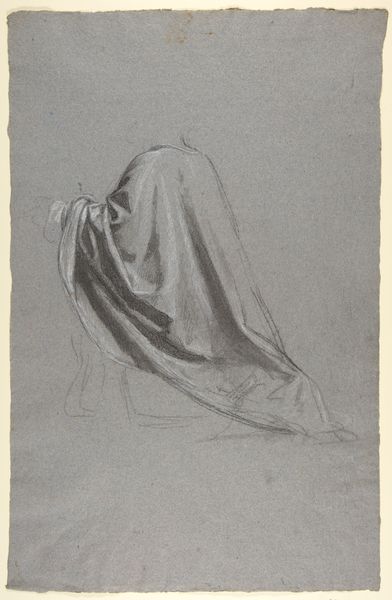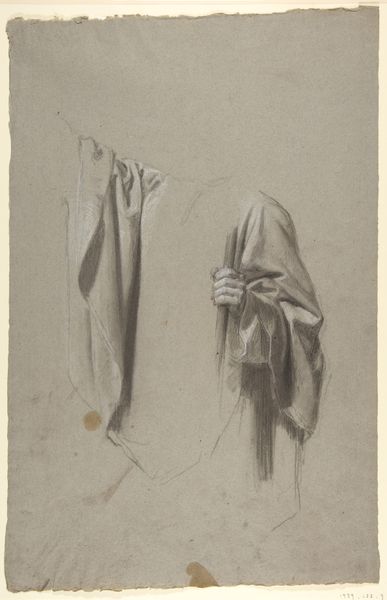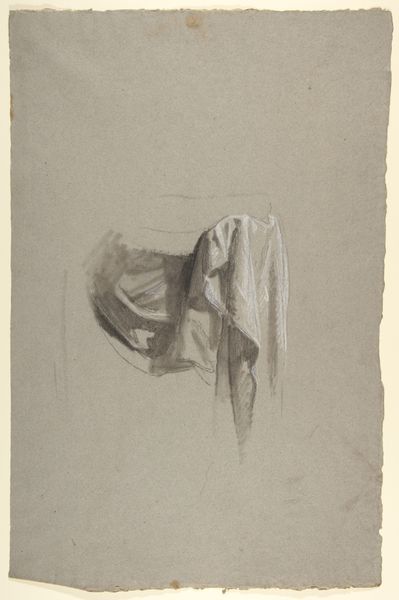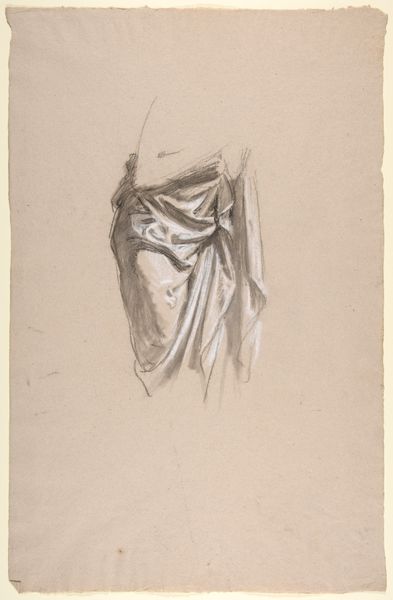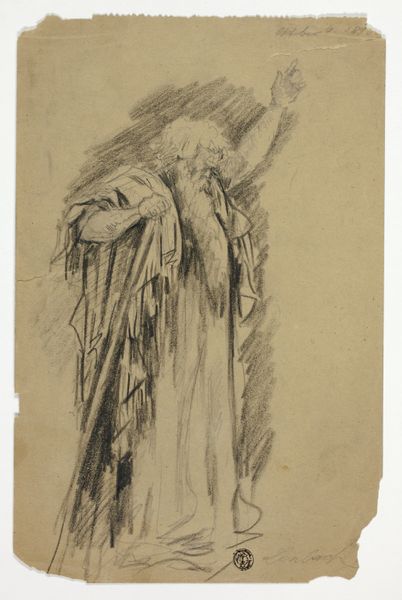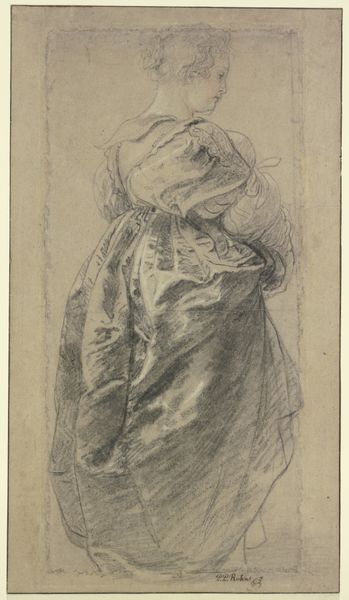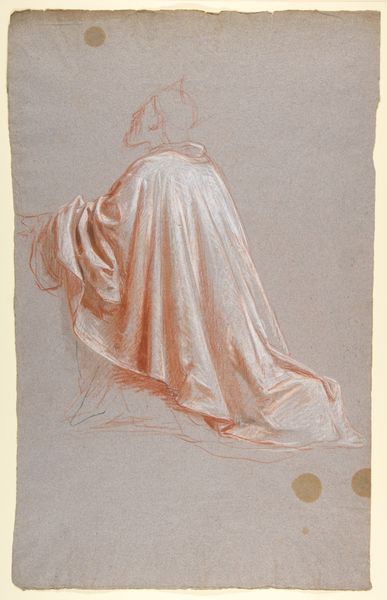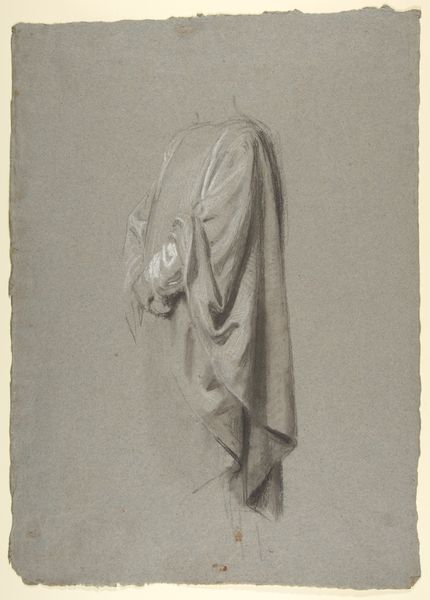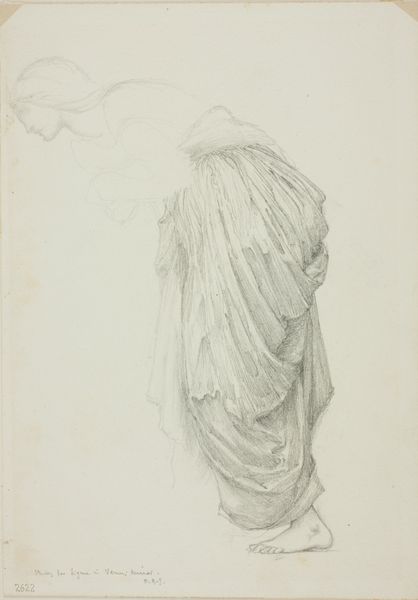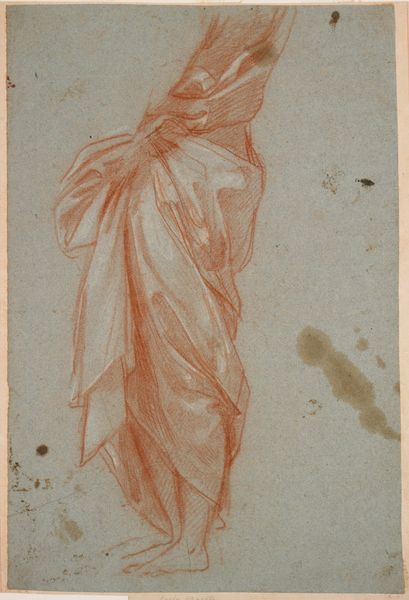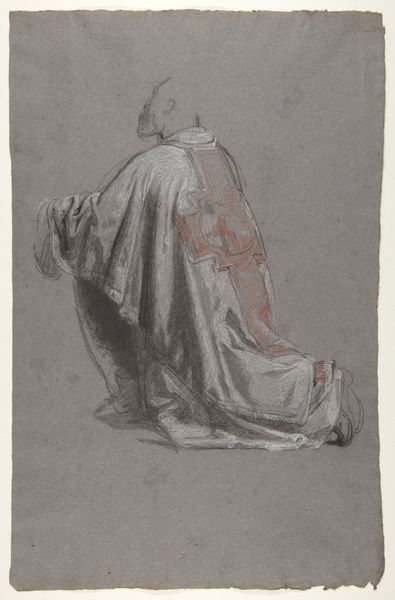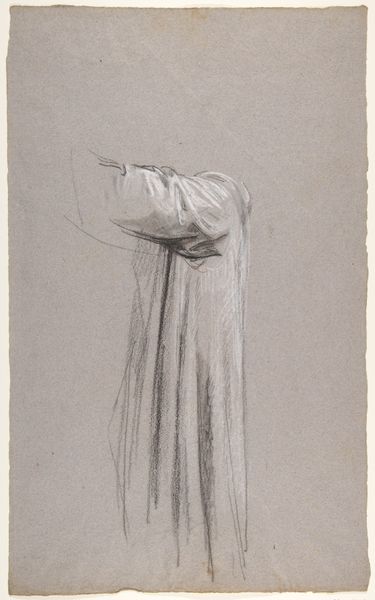
Drapery Study for Saint Remi (middle register; study for wall paintings in the Chapel of Saint Remi, Sainte-Clotilde, Paris, 1858) 1820 - 1875
0:00
0:00
drawing, print, dry-media, pencil
#
drawing
#
16_19th-century
# print
#
pencil sketch
#
figuration
#
dry-media
#
underpainting
#
romanticism
#
pencil
#
history-painting
#
academic-art
Dimensions: 17 3/4 x 12 1/2 in. (45.2 x 31.8 cm)
Copyright: Public Domain
Curator: Welcome. We are looking at Isidore Pils's pencil drawing, “Drapery Study for Saint Remi.” It served as preparation for wall paintings in the Chapel of Saint Remi, Sainte-Clotilde, Paris. Editor: Even in this preliminary sketch, one senses the gravitas of the subject; it looks somber. The folds of fabric are meticulously rendered, yes, but they evoke mourning. Curator: It is remarkable how Pils captures the weight and fall of the fabric. Notice how the cross-hatching builds volume and depth; the use of chiaroscuro models the material itself. There is a tangible, sculptural quality here, though merely suggested on paper. Editor: Drapery in art carries so much symbolic weight. Throughout history, it is a signifier of status, mystery, and sometimes concealment. In religious iconography, the fall of a robe, the fold of a veil—these are almost hieroglyphs. In this study, that the face of the figure is obscured, we are left to contemplate only these material symbols. What do you think of its emotional tenor, given that Pils’ intention was for its situating within a chapel? Curator: The Romantic tendencies within academic art are clearly present here. Pils allows form to take precedence, carefully constructing and defining shape, allowing for an underpainting approach that prioritizes precision over emotive flair, as one expects for architecture of that period. That's where its real power lies; he’s not inventing meaning, he is extracting it. Editor: Perhaps both intentions coincided; Pils worked in a turbulent era. This work strikes me with pathos, reminding us how symbols, no matter how formal, become imbued with a cultural soul. Curator: That's very astute. It’s precisely in balancing representation and the semiotics that we start to comprehend Pils' approach to visualizing the sacred. Editor: What started as just folds of cloth to our eye now reveals layers of meaning. It makes you appreciate Pils' contribution, and the way such seemingly humble sketches prefigure larger narratives.
Comments
No comments
Be the first to comment and join the conversation on the ultimate creative platform.
